Well, what do ya know? The Japanese beetles have returned. Over the past couple of weeks, I’ve been conducting a highly scientific garden experiment regarding the Japanese beetles that are incessantly eating our roses and cherry trees. Today on the blog, I bring you the steps of my research leading to a conclusion with commentary thrown in for good measure.
Something a little different, I guess you might say. Something inspired by 5th grade science class.
Or Mystery Science Theater.
Remember that greatness?
Or maybe my efforts were inspired by a childhood spent only a few fields away from the UofA Northeast Research and Extension Center (aka The Experiment Station). That’s probably it.
Step 1: Identify the problem
Japanese beetles are ravaging our roses. Just like last summer. And the summer before. All God’s creatures gotta eat, but it’s hard to find the good in this.
Plus, it’s rude.
Step 2: Research
This year, I’ve been researching ways to eliminate Japanese beetles without using pesticides. Without spending hours hand-picking them from leaves and buds.
Knowledge is power. So is the internet. Several articles mention a method for luring and trapping Japanese Beetles using fruit cocktail. When I saw the fruit cocktail trap suggested by Farmer’s Almanac, I was all in.
I can’t remember the last time I bought or ate fruit cocktail. But I’m pretty sure it was back when my kids viewed it as a fancy dessert with their chicken nuggets. The same “kids” who now drink whiskey in their cocktails.
Yup.
Step 3: Form a Hypothesis
If I provide Japanese beetles their very own container of fruit cocktail, they will love it, choose it over my roses. Thereby, I will save the roses / save the world by offering them something better, something sweeter, something with a cherry on top.
Yay me.
Brilliant.
Step 4: Plan Experiment
“Equipment” needed—one large can of fruit cocktail in heavy syrup; bucket; brick; water; sunlight.
Step 5: Perform Experiment
- Open the can of fruit cocktail and eat one of the cherries. Eating a cherry when presented with a can of fruit cocktail is as much a requirement now as it was when I was a child. (It’s important that we agree on this even though at age 56 the cherry, sadly, has no taste.)
- Rummage around in the garage and look for a bucket the ideal size to hold the can of fruit cocktail with space enough for water. I decided on a flower pot that doesn’t have a drainage hole. Up until that point, the flower pot had never been useful. Why make flower pots without drainage holes? Better yet, why buy one?
- Fill the space around the fruit cocktail with tap water from the sink or from the water hose. The premise is that the beetles will drink the “cocktail” and then drown in the water. Hmm. (FYI, because of the size of my flower pot, I placed a broken brick in the bottom to raise the can of fruit higher.)
- Place the beetle cocktail some distance from the rose bushes.
- Wait.
Tick Tock.
Step 6: Analyze Data
Two Days Later:
When a horrible thunderstorm began, I ran outside and moved the cocktail flower pot to the porch until the storm passed which took some time. While on the porch, Annabelle took a slurp from the fruit cocktail. Later, Lucy did the same thing.
Three Days Later:
I returned the flower pot to the garden.
Four Days Later:
Checked for bugs.
Nothing but a fly.
Five Days Later:
Noticed a drowned ant. Felt sad about that.
One Week Later:
Fermentation had begun. Water was nasty. Evaporation is real, y’all. I caught two Japanese beetles, several lesser insects, one slug.
Tada.
Step 7: Form Conclusion
- Roses are much tastier to Japanese Beetles than a can of fruit cocktail.
- Lucy and Annabelle like fruit cocktail.
- Watching fruit cocktail break down in the sun is quite entertaining in itself.
I went back and re-read the article from Farmer’s Almanac. Now, post-experiment, I have a different interpretation of this line: You can buy Japanese beetle traps of all sorts, but most are no more effective than a can of fruit cocktail.
In other words, none of them work?
Sneaky speak, those farmers.
To be fair, this is the point I realized I didn’t accurately follow the instructions as recommended by others who have successfully used fruit cocktail in the garden. I should have let the fruit ferment, then try to drown the beetles.
So I added a Step 6 Part 2 to my highly scientific experiment.
Step 6 Part 2:
I disposed of the nasty water, refilled with soapy water, and waited for the fermented fruit to do its magic.
Step 7 Part 2:
Still, some time later, I only caught a milkweed bug and a ton of gnats. I suppose others have had luck with fruit cocktail, but I can’t call my experiment a great success.
Step 8: Communicate Conclusion to the Masses
✔
Thank you, masses, for reading.
Thank you very much.
Grace Grits and Gardening
Farm. Food. Garden. Life.
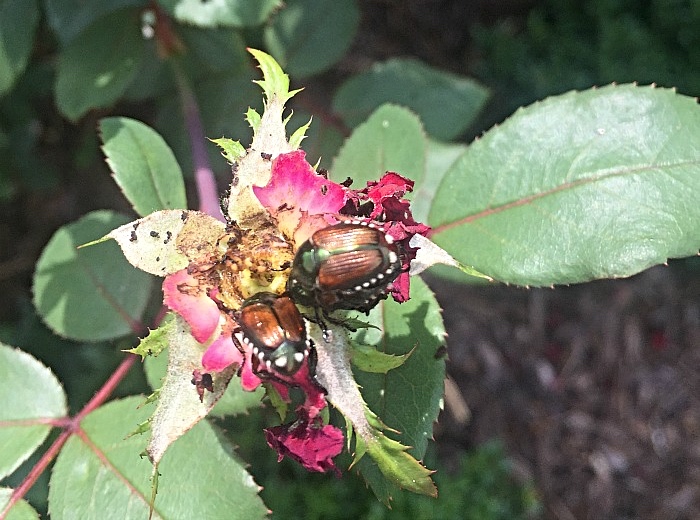
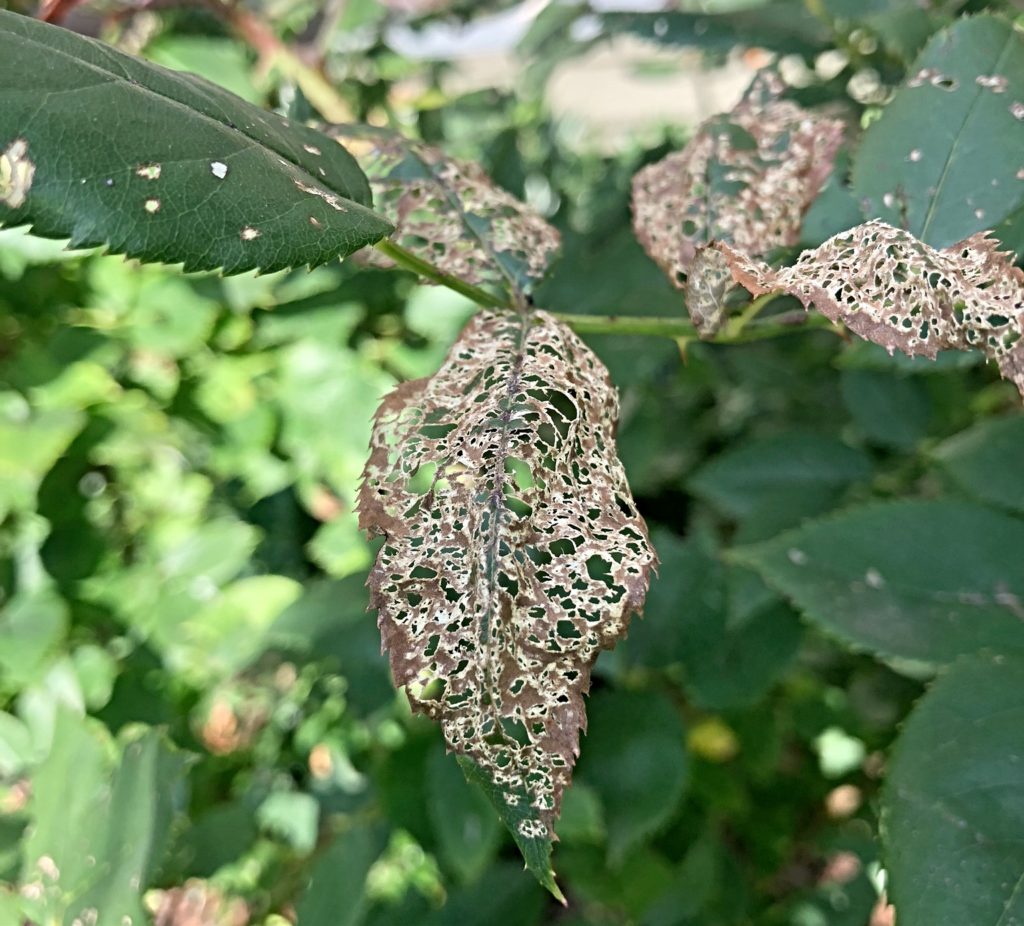


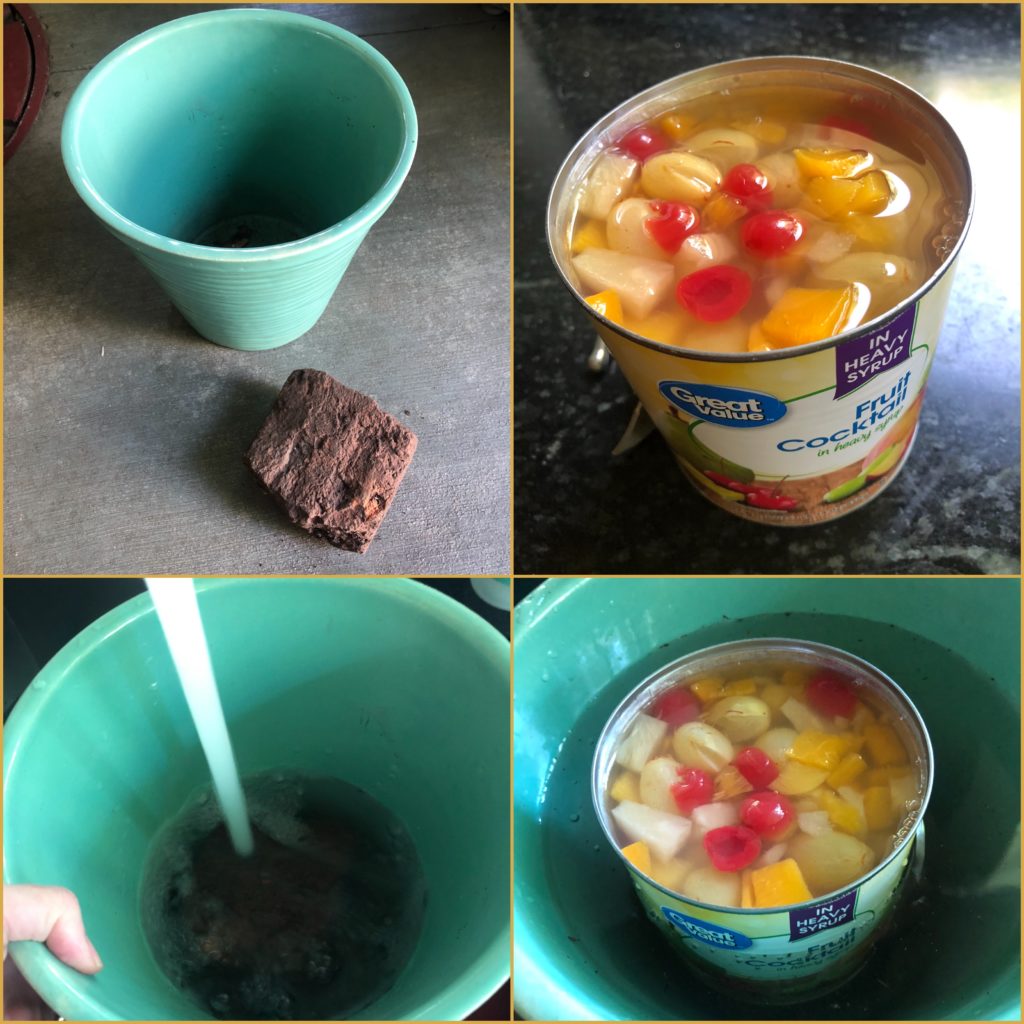
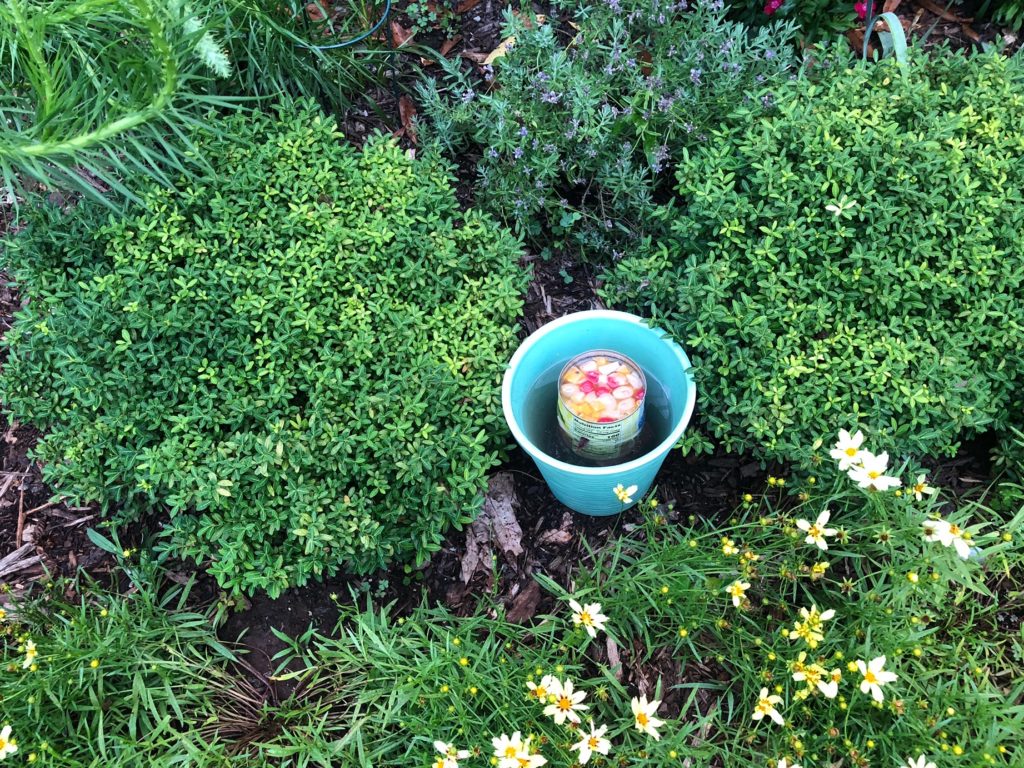
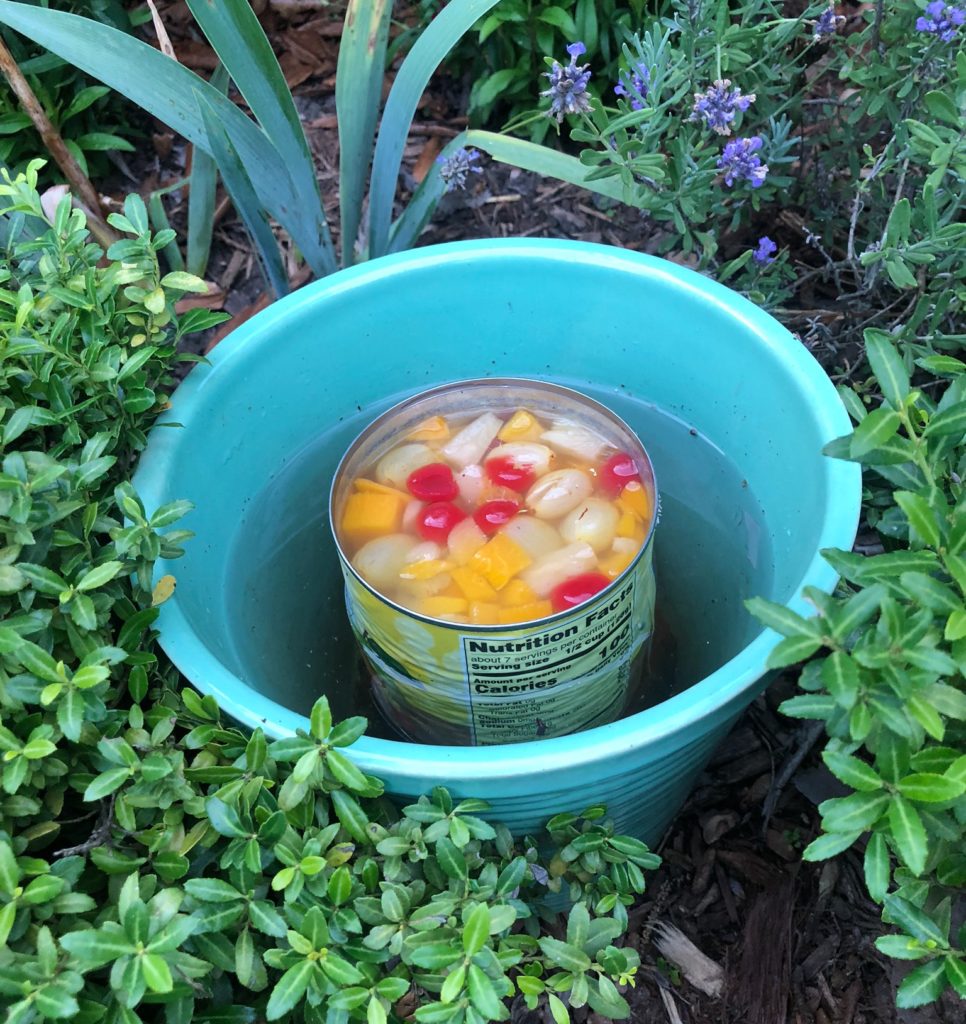
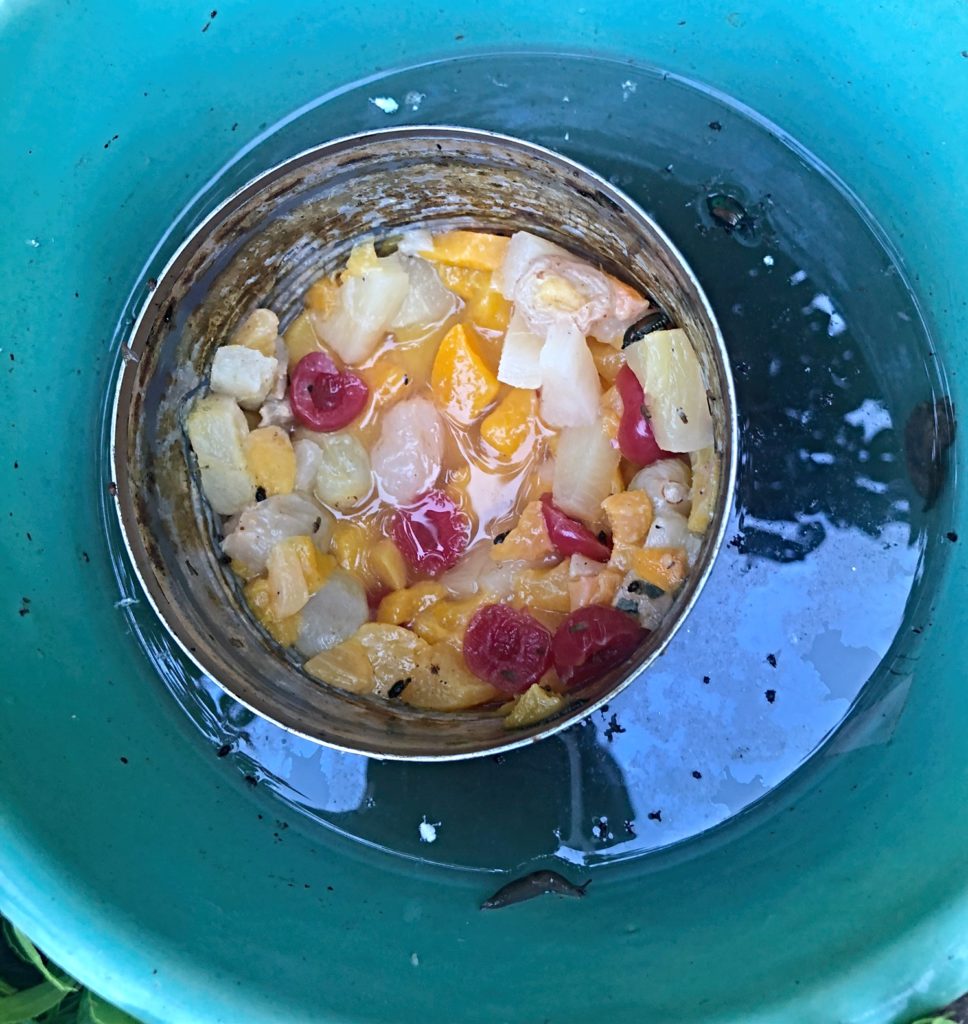
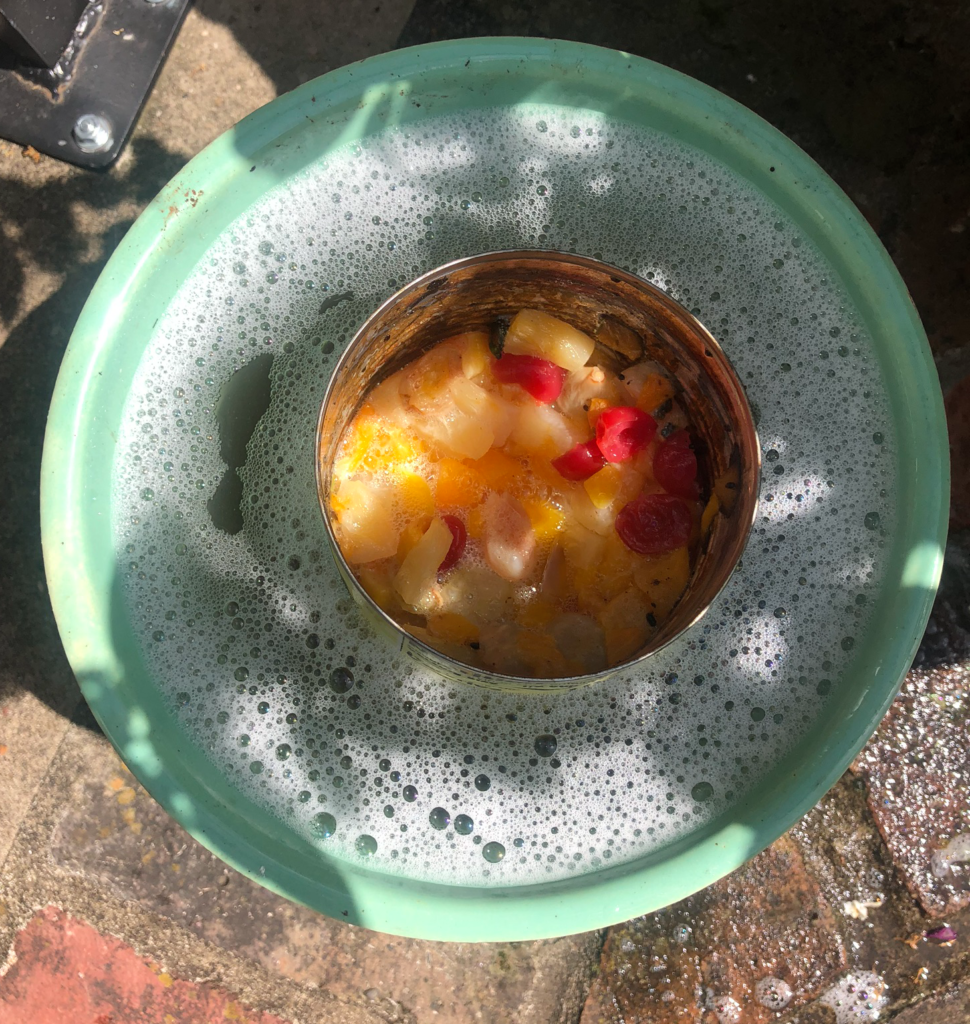








Oh I love a well executed scientific experiment. Thanks for sharing.
Hilarious! The only thing that I’ve found is to do a daily walk carrying a container of bleach water. Pick them off one by one & toss them in the water (evil laugh here). Doing this consistently seems to keep them under control for me.
I was one of those kids who caught them, tied a string to a leg then played with them like a kite on a string. I’m definitely not one of those people who believe every single living thing needs protection. Wildlife needs to be maintained because some of it is invasive & very destructive.
Sometimes you win and sometimes you lose, just like the musical pairing says. It reminds me of how I used different concoctions over the years in an effort to keep the deer away from my hostas. All for naught.
The warfare on Japanese beetles…..Have you tried the organic Milky Spore powder in the gardens? This powder attacks the next phase of the adult Japanese beetles as they prepare to produce the grubs that burrow into the soil.
I have not! Thanks for the tip, I will try it…